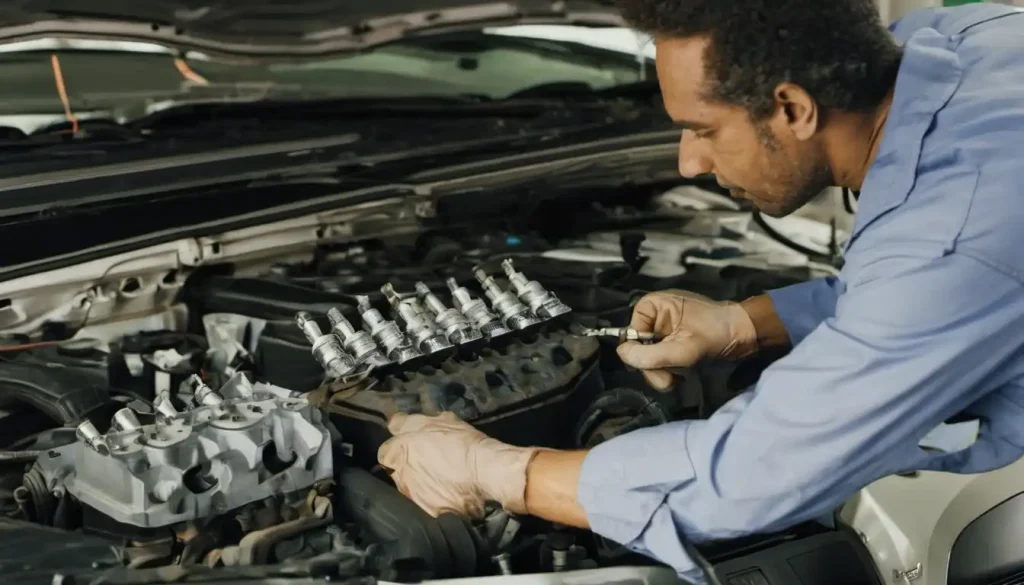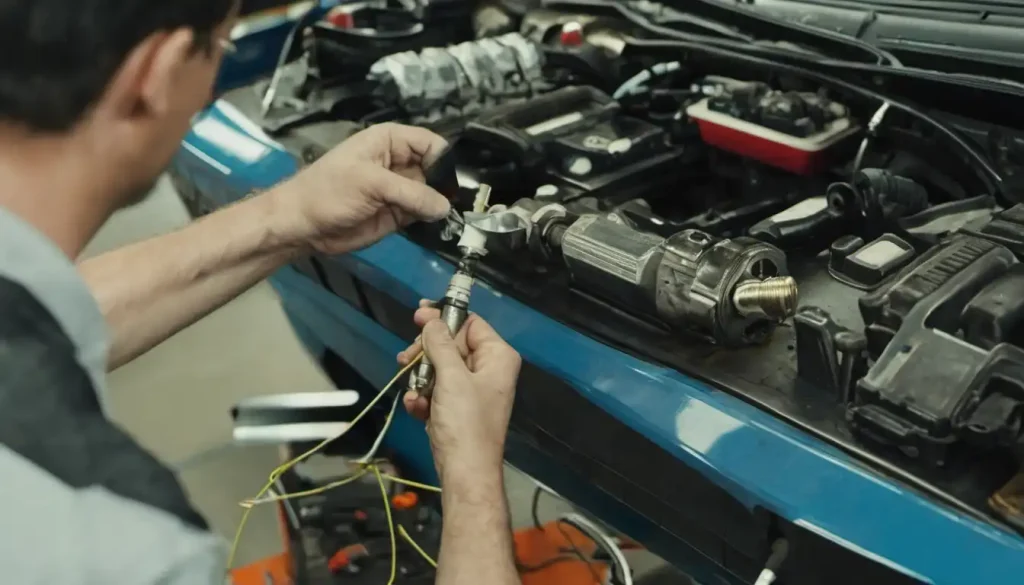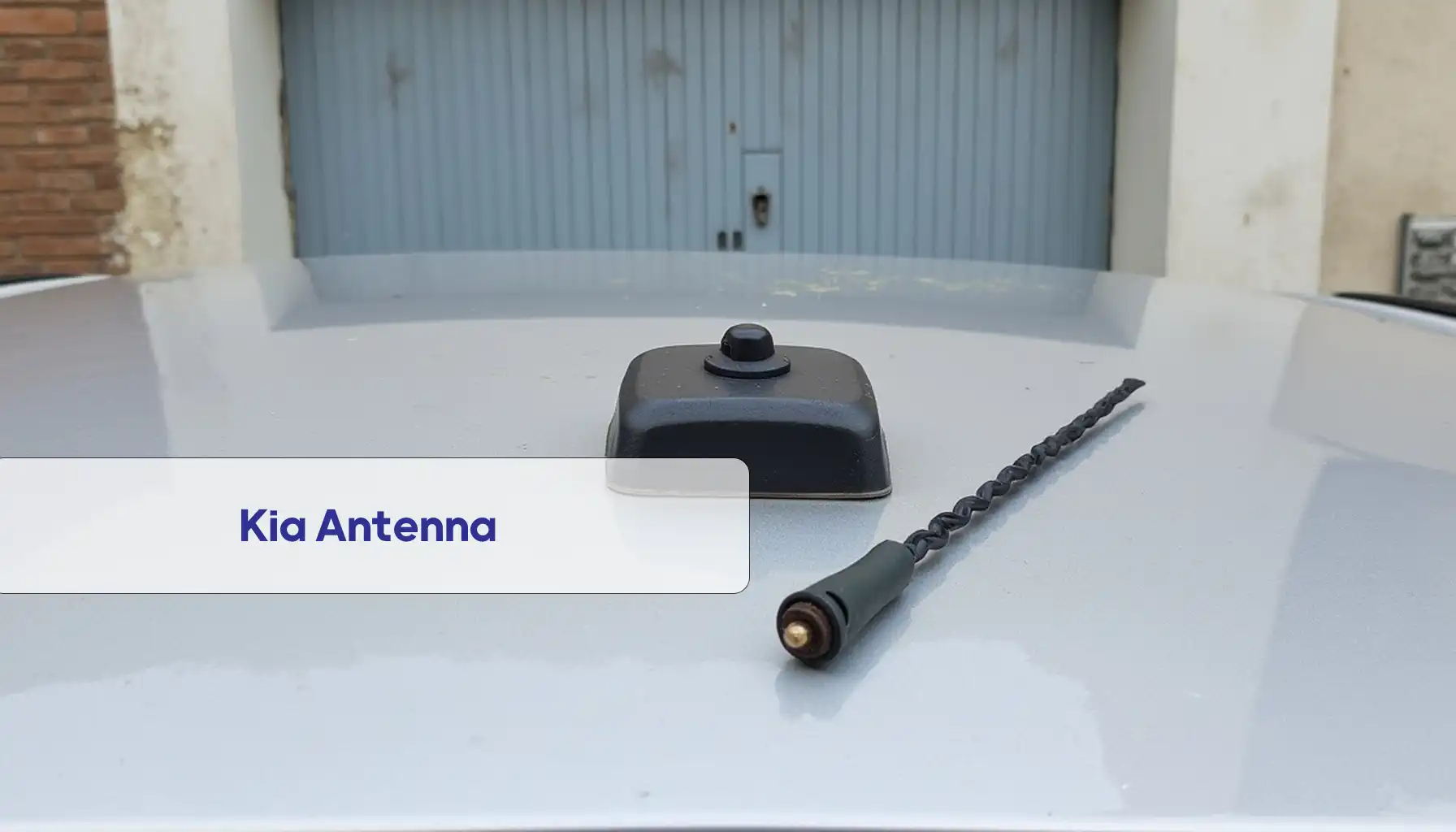When it comes to ensuring your vehicle’s engine runs smoothly and efficiently, one small but crucial component plays a vital role: the spark plug. Spark plugs are responsible for igniting the air-fuel mixture that powers your vehicle and is nested within the engine’s cylinders. That’s why the adjustment of the spark plug gap is very crustal for the engine.
However, many vehicle owners are unaware of the importance of maintaining the correct spark plug gap settings. Failing to do so can lead to a host of problems that can compromise your engine’s performance and even cause permanent damage.
The correct and timely spark in the engine’s spark plug only occurs when the gap or spacing of the spark plug opening is properly adjusted.
The spark plug gap refers to the distance between the center and side electrodes of the spark plug that must be precisely calibrated according to the manufacturer’s specifications for your particular vehicle and engine. When the gap is set correctly, the spark plug can generate the optimal electrical arc required to ignite the air-fuel mixture at the right moment, resulting in efficient combustion and peak engine performance.
To clarify the topic, we’ll first discuss the structure of the spark plug, and at the end, we’ll explain how you can determine if the gap is not adjusted correctly without removing the spark plug from the engine!

For your engine’s spark plugs to function properly, the gap between the center and side electrodes must be precisely calibrated to ensure the engine performs at its best. Making sure the spark plugs have the proper gap is crucial for engine performance. The gap is the distance between the center and side electrodes, so the electrical arc occurs at the appropriate voltage to ignite the fuel and create combustion, allowing the engine to run correctly.
The distance between the center electrode and the middle electrode of the spark plug is called the gap or opening of the vehicle’s spark plug. For each car and engine, a specific gap is defined, which can be found by referring to the vehicle’s manual or a label that is usually installed under the hood or in the engine compartment of the car.
Necessity of spark plug gap adjustment
If the spark plug gap is too small or too large, it can lead to a range of issues. An overly small gap can cause the spark to be weak and inconsistent, leading to misfires, rough idling, and reduced fuel efficiency. On the other hand, an excessively large gap can require more voltage to generate a spark, putting additional strain on your vehicle’s ignition system. Over time, this extra stress can cause premature wear on ignition components, such as the coil and wires, potentially leading to costly repairs.
Improper spark plug gap settings can also contribute to a phenomenon known as electrode burning. When the gap is not set correctly, the electrodes can become overheated, causing them to melt or erode prematurely. This damage can lead to spark plug failure, which can manifest as engine misfires, loss of power, and even catalytic converter damage due to unburned fuel entering the exhaust system.
To avoid these pitfalls, it is essential to use the proper tools and techniques when setting or adjusting spark plug gaps. A spark plug gap gauge is a must-have tool for this task, as it allows you to precisely measure and adjust the gap to the manufacturer’s recommended specifications. Feeler gauges, which consist of thin metal blades of varying thicknesses, are ideal for measuring gaps on iridium and other precious metal spark plugs, as they provide the most accurate readings.

When installing new spark plugs, it is crucial to check and adjust the gap, even if the plugs come pre-gapped from the manufacturer. Over time, the gap can change due to handling or shipping, so it is always best to verify the gap before installation. If you are unsure about the correct gap settings for your vehicle, consult your owner’s manual or seek guidance from a professional mechanic.
In conclusion, neglecting to maintain the proper spark plug gap settings can lead to a variety of engine problems, reduced performance, and even costly repairs. By understanding the importance of precise spark plug gapping and using the appropriate tools and techniques, you can ensure that your vehicle’s engine runs at its best and avoid the dangers associated with improper gap settings. Remember, when it comes to spark plug gaps, precision matters.
Why should spark plug gap tools be used to adjust the engine?
If you want to maximize the performance of your vehicle’s engine or want to check the condition of your vehicle’s spark plugs, it is necessary to use spark plug gap tools. Using a spark plug gap tool allows you to achieve the precise recommended gap size specified by the manufacturer, which increases the efficiency of the spark plug by ensuring the correct spark is fired for the combustion of the air-fuel mixture to power your vehicle.
Having the proper spark plug gap can help reduce the likelihood of electrode burning, which can lead to premature spark plug failure. If the gap is not correct, the electrodes can burn out and result in spark plug failure.
Types of spark plug gap tools
A feeler gauge has several metal blades of varying thicknesses, resembling a pocket knife. Each blade is a specific thickness, and with a wide range of blades, you can measure almost any gap.

It is ideal for iridium spark plugs and those made from other precious metals and is the most accurate tool for measuring the gap. One drawback is that you need pliers to bend the spark plug electrode, and if you use them to adjust the plug, the blades will deform.
Do spark plug gaps always need to be adjusted?
Not always. In the past, adjusting the spark plug gaps was necessary, but today, spark plug gaps are usually pre-set. However, it is recommended to double-check that the gap is correctly set to the vehicle’s recommended settings when installing the plugs.
The gap spacing varies for each vehicle, but most are between 0.7mm to 1.3mm. To find the recommended gap for your car, consult the manual or available catalogs, or ask Cartiz support to recommend a spark plug with the appropriate gap for your vehicle.
Here is the translation of the text to American English:
How do you adjust the spark plug gap?
• Step 1: Get a gap gauge.
• Step 2: Clean the spark plug. If the spark plug is new, there is no need to do this. But if you are inspecting a spark plug that is currently installed in the vehicle, it may be dirty at the contact points. Never use abrasive materials to clean the spark plug.
• Step 3: Measure the spark plug gap. Using the gap gauge, pass the tool through the electrodes to determine the measurement. Note the measurement and compare it with the recommended settings mentioned in the owner’s manual.
• Step 4: Make any necessary adjustments. Select the correct size on your gap gauge. If you can’t pass the correct gap gauge through the gap, you need to increase the gap. If the tool passes through the gap without touching the electrodes, the gap is too large and needs to be reduced.
Use the spark plug gap tool to adjust the gap. Gently bend the side electrode inward to reduce the gap or outward to increase it.

Be very careful when adjusting the spark plug gap not to bend the electrode more than a fraction of a millimeter, as the spark plugs are not designed to withstand high stress. Also, be careful not to hit the center electrode. If you detach the lower electrode or damage the center electrode, you will need a new spark plug. The precious metal iridium or platinum center electrodes are very delicate, so using the proper spark plug gap tool is very important.
• Step 5: Recheck the gap and repeat the adjustment process until the gap adjustment tool fits snugly between the electrodes.



